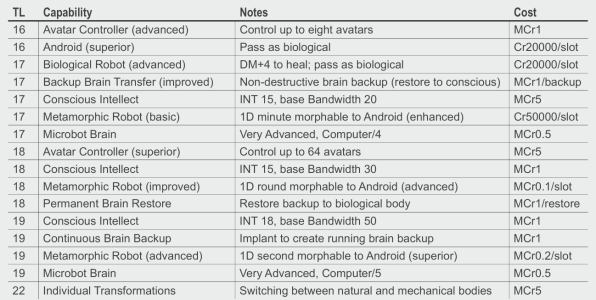Terry Mixon
Emperor Mongoose
No worries. I’m incoherent all the time.An approach I would take, if I was writing 'Manufacturing Plant' rules is that each manufacturing plant takes in 'production stock materials' and out puts 'product' of its' own TL. I would make manufacturing a multi-step process:
1} Extraction (produces ore)
2} Smelting/refining (produces material)
3} Making production stock (produces components)
4} Producing product (produces finished goods)
The basic assumption is X Cr of input = >X Cr of output; but this improves as TL rises. At TL 1 1000 Cr in might equal 1001 Cr out, and half of the material is 'waste'; but TL 2 would produce both more value & less waste, etc. If you want to model more valuable output, feed in more input -- but the higher Cr output means more waste.
This is for Manufacturing Plants; Fabricators would produce more waste for a given (lower TL than the fabricator) item from a (TL appropriate to the item) Manufacturing Plant.
Lay out the 'productivity' and 'waste' curves so as not to cross the 100% mark before 'maximum TL' unless you are prepared to explain it. The 'waste' might just be useful for making bricks, or some fraction of it might have enough value to go back into the 'Extraction' end of production.
Bleah. I am just roughing this; I haven't really thought it through. I will probably build a spreadsheet at some point. Sorry for being a bit incoherent.



